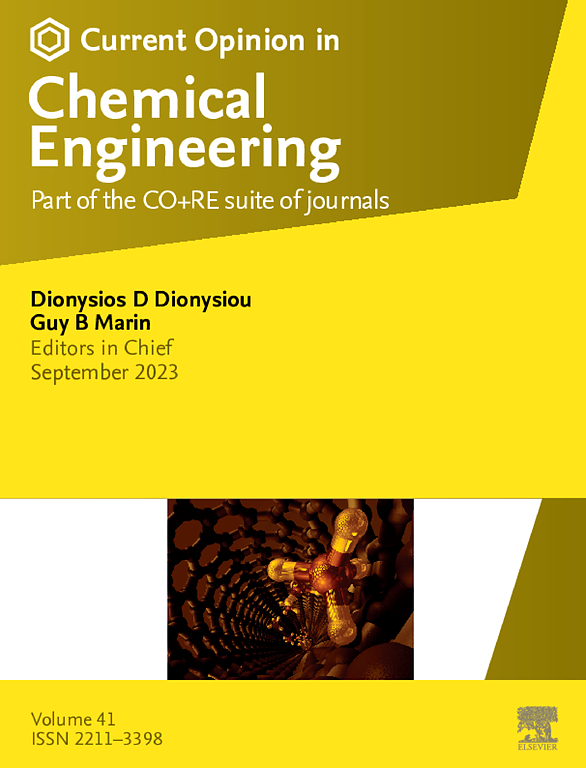Oxidation of alcohols in photocatalytic hydrogen production: from sacrifice to valorization
IF 6.8
2区 工程技术
Q1 BIOTECHNOLOGY & APPLIED MICROBIOLOGY
引用次数: 0
Abstract
Photocatalytic hydrogen production, even if it should ideally be performed from pure water (i.e. water splitting), benefits from the presence of an easily oxidized reagent, either inorganic (classically sulfite/sulfide) or organic (classically methanol) that scavenges photoproduced holes and alleviates the process form the kinetically hindered, multi-electron process of water oxidation to molecular oxygen. Even if pioneering works of the photocatalytic reaction between alcohols and water examined the outcome of the oxidation branch of the reaction, the use of these reagents passed through a period in which reporting only hydrogen evolution became common practice, assuming total oxidation and taking the consumption of the organic as a sacrifice for hydrogen production. However, in more recent years, the oxidation outcome of the reaction has regained attention, mainly because of the interest in coupling photocatalysis with biomass utilization. Thus, the valorization of biomass-derived alcohol hole scavengers has become an interesting topic in photocatalysis research. Here, we highlight some recent works on this topic, selecting those that have received more attention in the last 2–5 years: polyol (glycerol, glucose) valorization, transformations of furfuryl alcohol and 5-hydroxymethyl furfural, and C-C coupling reactions starting from alcohols. In our opinion, these represent promising niches for the application of photocatalytic processes.
光催化制氢中醇的氧化:从牺牲到增值
光催化制氢,即使理想情况下应该从纯水(即水分裂)中进行,也受益于易于氧化的试剂的存在,无机试剂(典型的亚硫酸盐/硫化物)或有机试剂(典型的甲醇)可以清除光产生的空穴,并减轻了水氧化成分子氧的动力学受阻的多电子过程。即使醇和水之间的光催化反应的开创性工作检查了反应的氧化分支的结果,这些试剂的使用也经历了一段时间,在这段时间里,只报告氢的演变成为普遍做法,假设完全氧化,并将有机物质的消耗作为氢生产的牺牲。然而,近年来,该反应的氧化结果重新引起人们的关注,主要是因为人们对光催化与生物质利用的耦合感兴趣。因此,生物质衍生醇孔清除剂的增值已成为光催化研究的一个有趣课题。在这里,我们重点介绍了最近在这一主题上的一些工作,选择了最近2-5年来受到更多关注的工作:多元醇(甘油,葡萄糖)的价化,糠醇和5-羟甲基糠醛的转化,以及从醇开始的C-C偶联反应。在我们看来,这些代表了光催化工艺应用的有前途的利基。
本文章由计算机程序翻译,如有差异,请以英文原文为准。
求助全文
约1分钟内获得全文
求助全文
来源期刊

Current Opinion in Chemical Engineering
BIOTECHNOLOGY & APPLIED MICROBIOLOGYENGINE-ENGINEERING, CHEMICAL
CiteScore
12.80
自引率
3.00%
发文量
114
期刊介绍:
Current Opinion in Chemical Engineering is devoted to bringing forth short and focused review articles written by experts on current advances in different areas of chemical engineering. Only invited review articles will be published.
The goals of each review article in Current Opinion in Chemical Engineering are:
1. To acquaint the reader/researcher with the most important recent papers in the given topic.
2. To provide the reader with the views/opinions of the expert in each topic.
The reviews are short (about 2500 words or 5-10 printed pages with figures) and serve as an invaluable source of information for researchers, teachers, professionals and students. The reviews also aim to stimulate exchange of ideas among experts.
Themed sections:
Each review will focus on particular aspects of one of the following themed sections of chemical engineering:
1. Nanotechnology
2. Energy and environmental engineering
3. Biotechnology and bioprocess engineering
4. Biological engineering (covering tissue engineering, regenerative medicine, drug delivery)
5. Separation engineering (covering membrane technologies, adsorbents, desalination, distillation etc.)
6. Materials engineering (covering biomaterials, inorganic especially ceramic materials, nanostructured materials).
7. Process systems engineering
8. Reaction engineering and catalysis.
 求助内容:
求助内容: 应助结果提醒方式:
应助结果提醒方式:


